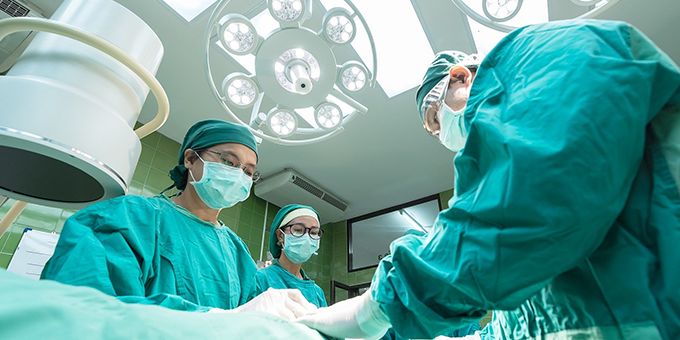Congress has a golden opportunity to create jobs and deliver nutritious, local, and sustainable produce to people who live in frontline and food desert communities. These are the people who suffer the most from a lack of access to nutritious produce.
 Feeding Frontline Communities
Feeding Frontline Communities

Carl Silverberg is Sr. VP of Outreach & Public Affairs & Seana Chambers | iUNU
With Food Banks overwhelmed and undersupplied it fell to the USDA to create a program that would help fulfill that need. Despite the $1.2 billion that was doled out to companies to help, according to the San Antonio News Express, “an event planning company got a $39 million contract to supply food banks in seven states in the southwest.”
The purpose here is not to question the motives or operations of USDA. They got handed an enormous and immediate problem, created a program they thought would help and it’s making a difference. The question is, can Congress come up with a better way of getting food from the source to the plate and at the same time, increase fresh food in frontline and food desert communities, and also reduce pollution? The answer is yes.
According to a recent article in Food Safety News, urban greenhouses operated by companies such as Gotham Greens use up to 95% less water than field operations. As for carbon emissions, the EPA states, “In 2018, greenhouse gas emissions from the agriculture economic sector accounted for 9.9 percent of total U.S. greenhouse gas emissions.” The overwhelming majority of that is from outdoor agricultural operations and much of it is due to the need to truck produce from the fields where it’s grown to the supermarkets and restaurants where it’s consumed.
Congress has a golden opportunity to create jobs and deliver nutritious, local, and sustainable produce to people who live in frontline and food desert communities. These are the people who suffer the most from pollution and the people who also suffer the most from a lack of access to nutritious produce. People who live in frontline communities and food deserts often lack the transportation to get to a supermarket, and certainly not a supermarket where locally grown, sustainable and fresh vegetables are available.
A program that would provide funding to build and create greenhouse operations in frontline communities and food deserts is the answer. It’s the perfect blend of a public/private partnership. High school and college students can learn about the advanced technology now being used in greenhouses, giving them hands-on experience in Agritech as well as high tech jobs. At a time when America is examining the lack of diversity, here’s a way to solve it and feed people at the same time.
As an example of workforce programs that are successful, UC Davis already has one that provides hands-on training in high-tech agriculture farming for students in disadvantaged urban and rural communities across the California Central Valley. That’s also an area that suffers greatly from farm pollution and runoff. Congress doesn’t have to create pilot projects to see if the concept of addressing workforce development in frontline communities will work, successful ones already exist that can be replicated throughout the country.
If set up and operated effectively, a portion of the harvest from a local greenhouse operation can be dedicated to the local food bank. This reduces the intense pressure to find food sources that food banks suddenly found themselves in after the pandemic caused widespread unemployment and people were unable to feed their families. Foodbanks were overwhelmed with demand and unable to keep up because of food supply interruptions. A local foodbank supplemented by locally grown produce would help solve these kinds of problems. Almost every greenhouse grower already donates a portion of their harvest to a local food bank or non-profit, so this is nothing unique.
The concept that one state, California, produces almost 13% of all cash farm receipts for the other 49 needs revising. Grants to build and operate greenhouses in frontline and food desert communities is an answer. It offers the benefits of workforce development, education in critical STEM skills, a reduction in GHG’s, water and air pollution, and at the same time provides people in those communities with what they need most. Food that is available in every other community but theirs.
The content & opinions in this article are the author’s and do not necessarily represent the views of AgriTechTomorrow
Comments (0)
This post does not have any comments. Be the first to leave a comment below.
Featured Product


